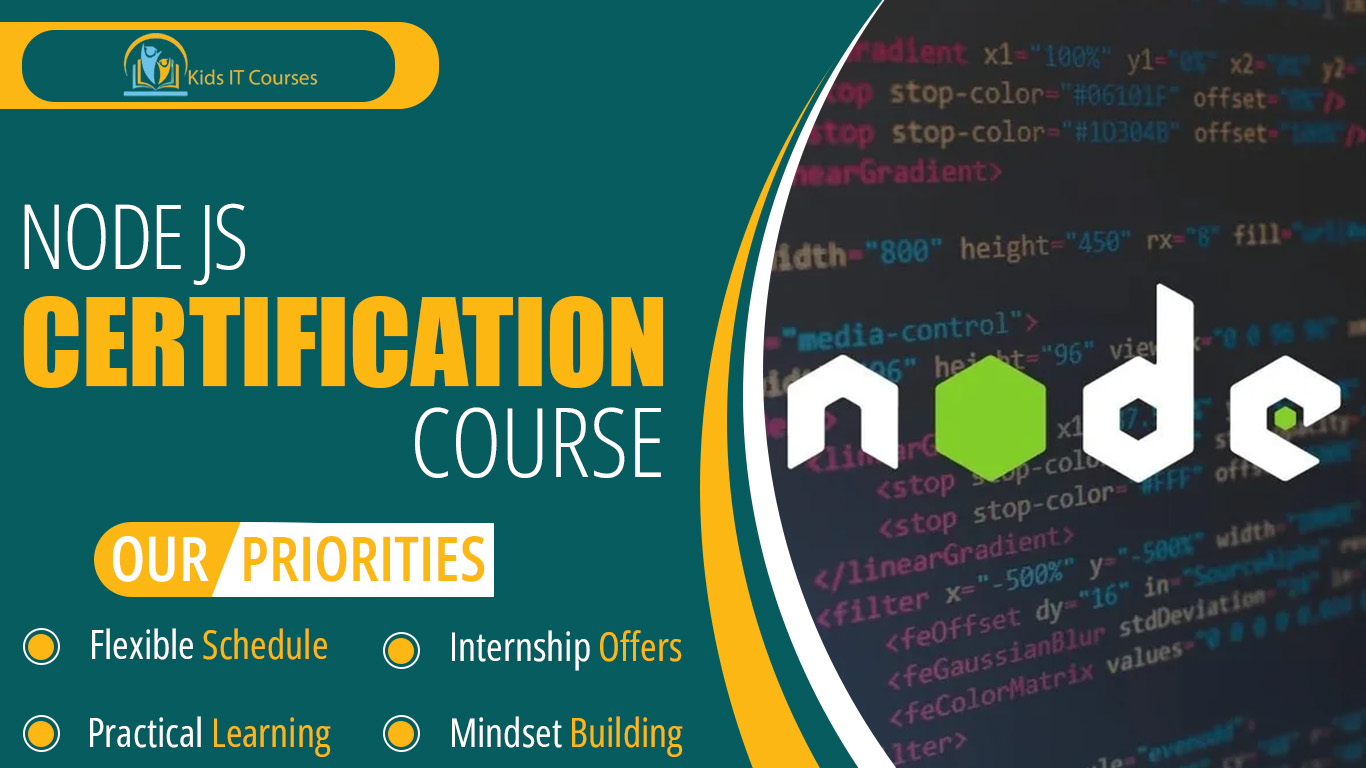
Node.js Course for Kids
Definition
• Node.js lets kids make fast and smart apps. They can build websites, games, or tools.
• With Node.js, kids create cool web apps. It runs the “back-end” or brain of websites.
• Node.js works with JavaScript, a popular coding language. If kids learn JavaScript, they can also use Node.js easily.
• Kids learn how data moves in websites and apps. They understand how buttons and pages talk to each other.
• Kids can create chat apps, simple games, or live tools. It’s fun and useful for creative minds.
• Kids practice thinking step by step. They learn how to fix bugs and plan better.
• Big companies use Node.js to build websites. Kids get real-world skills from an early age!
Importance
• Node.js lets kids build fast and powerful apps. It’s great for games, chats, or online tools.
• Kids learn to write smart code that works quickly. They see how things happen behind websites.
• With Node.js, kids use JavaScript for both front and back ends. One language makes learning easy!
• Kids can make real apps like timers, to-do lists, or simple servers. They learn by doing.
• Kids learn how to fix bugs and think like real programmers. It builds strong thinking skills.
• Big companies like Netflix and PayPal use Node.js. Kids get a head start on real-world tools.
• Node.js makes coding fun and creative. Kids love building cool things they can share!
Advantages for Freelancing
• Node.js helps kids build apps quickly. They see results fast, which keeps it fun!
• Big companies like Netflix and PayPal use Node.js. Kids learn something real and useful.
• Kids learn to solve coding problems step by step. It grows their thinking and logic skills.
• With Node.js, kids can make small games and apps. They love using what they create!
• Node.js uses JavaScript for both sides of a website. Kids don’t have to learn two languages—just one!
• Kids can team up to build websites or games. It teaches teamwork and sharing ideas.
• Node.js is a great step toward becoming a web developer. It opens doors to exciting tech jobs in the future!
Session 1 : What is Node.js?
Introduction to Node.js as a JavaScript runtime for the server
Real-life example: Powering chat apps, APIs, and real-time games
Benefits: fast, non-blocking, and scalable
Installing Node.js and running your first script
Activity: Build and run your first “Hello from Node!” app
Session 2 : Understanding Modules and File System
Working with built-in Node.js modules (fs, path, os)
Real-life example: Reading and writing user files
Creating your own custom modules
Activity: Create a note-taking app that saves to a file
Session 3 : Working with NPM (Node Package Manager)
Installing and using third-party packages
Managing dependencies with
package.jsonReal-life example: Adding color to console logs or managing dates
Activity: Build an app using a helpful npm package (like chalk or moment)
Session 4 : Creating a Simple Web Server
Using the
httpmodule to create serversSending basic HTML, JSON, and status codes
Real-life example: Simulate a mini website backend
Activity: Build a basic server that returns different responses
Session 5 : Express.js – Web Framework for Node
Introduction to Express for creating APIs and web apps
Setting up routes, middleware, and request handling
Real-life example: Creating an API for a to-do list
Activity: Create a simple REST API with Express
Session 6 : Connecting Node.js to Databases
Using MongoDB or PostgreSQL with Node.js
Real-life example: Saving user profiles or messages
CRUD operations: Create, Read, Update, Delete
Activity: Build a backend for a blog or notes app
Session 7 : Asynchronous Programming & APIs
Understanding callbacks, promises, and async/await
Fetching data from external APIs (e.g., weather API)
Real-life example: Building a weather dashboard
Activity: Create an app that fetches and displays API data
Session 8 : Deploying Node.js Apps
Preparing your Node.js app for production
Hosting using platforms like Render, Vercel, or Heroku
Real-life example: Share your app live with users
Activity: Deploy your Node.js project and test it online
Bonus Materials
Node.js cheat sheet and common CLI commands
Mini projects: Weather App, Blog Backend, Chat Server
Free hosting and deployment guides
Certificate of Completion for Node.js Development
